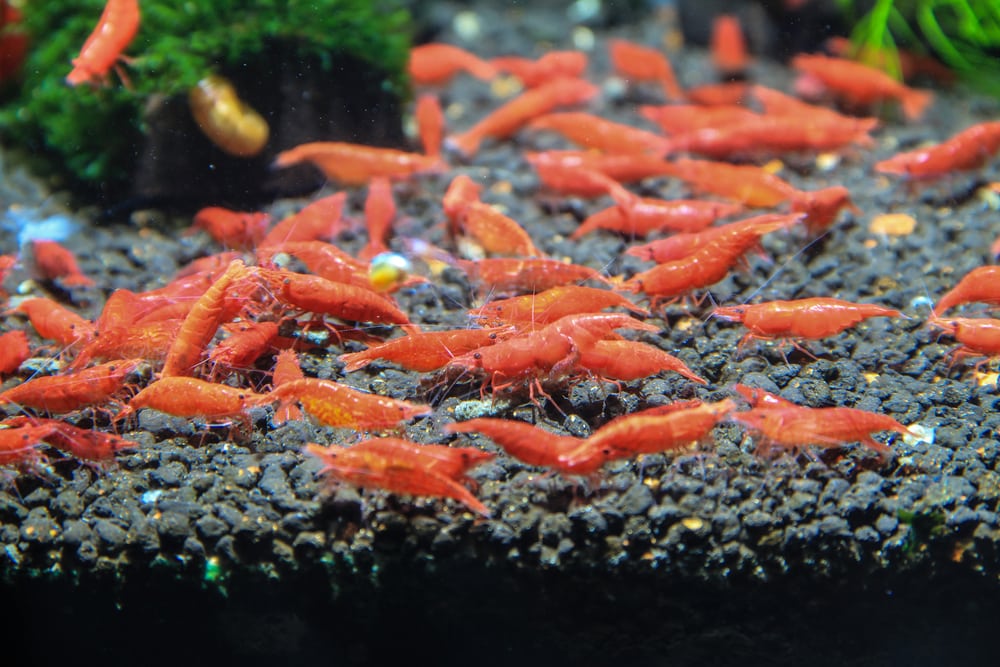In the realm of nature’s wonders, observing the hatching of ghost shrimp eggs is a captivating spectacle that paints a vivid tapestry of life’s intricate tapestry. As tiny lives emerge from their delicate shells, a sense of awe fills the air, inspiring curiosity and appreciation for the wonders that surround us.

Image: www.reddit.com
For those embarking on the journey of parenthood with these fascinating crustaceans, understanding the intricacies of ghost shrimp egg hatching is essential. From unraveling the mysteries of gestation to comprehending the complexities of larval development, this article delves into the depths of this enchanting process, offering insights that will illuminate your path.
Deciphering the Gestation Period: A Tale of Patience and Precision
After ghost shrimp embark on their reproductive adventure, the fertilized eggs are carefully carried beneath the female’s abdomen. This protective embrace provides a sanctuary for the developing embryos, shielding them from the perilous currents and potential predators that lurk in their watery realm. The gestation period, which encompasses the time from fertilization to hatching, can vary depending on the water temperature, with higher temperatures accelerating the process and cooler temperatures extending it.
As days transform into nights, the mother ghost shrimp meticulously tends to her precious cargo, her antennae constantly quivering as she monitors the water conditions. With unwavering patience, she ensures a steady supply of oxygen and nutrients, nurturing her offspring until their moment of emergence arrives.
Witnessing the Hatching Phenomenon: A Symphony of Life Unfolding
As the hatching process draws near, the ghost shrimp eggs undergo a remarkable transformation. The translucent shells that once encased them become translucent, revealing the tiny, fully-formed shrimp wriggling within. With a sudden burst of energy, the newly hatched shrimp emerge from their watery confines, venturing into the vast expanse of their aquatic world.
These miniature creatures, measuring a mere few millimeters in length, are equipped with all the necessary tools for survival. Their delicate antennae extend like miniature radar systems, scanning their surroundings for food and potential threats. Their transparent bodies allow them to blend seamlessly into their environment, offering a measure of protection from predators.
Unraveling the Complexities of Larval Development: A Journey of Metamorphosis
The transition from egg to juvenile ghost shrimp is not a straightforward path but rather a wondrous metamorphosis that encompasses multiple distinct stages. During the larval phase, which typically lasts several weeks, the young shrimp undergo a series of molts, shedding their exoskeletons to accommodate their rapid growth.
With each molt, the juveniles develop new features and acquire enhanced abilities. Their initial larval stage, characterized by a simplified body structure, gradually gives way to more complex forms, complete with segmented bodies and appendages that enable them to swim, feed, and navigate their watery environment with increasing proficiency.

Image: theaquariumguide.com
How Long Does It Take Ghost Shrimp Eggs To Hatch
Expert Advice for Facilitating a Successful Hatching Experience
While ghost shrimp eggs possess an inherent resilience, there are steps you can take to optimize their hatching success and ensure the well-being of your miniature charges:
- Maintain Optimal Water Parameters: Ghost shrimp eggs thrive in water with specific temperature and pH ranges. Invest in a reliable thermometer and pH tester to monitor and adjust these parameters as needed.
- Provide Ample Oxygenation: Newly hatched ghost shrimp are highly sensitive to water quality. Ensure adequate aeration in your tank to provide a steady supply of oxygen for their delicate respiratory systems.
- Avoid Overcrowding: While ghost shrimp are known for





:max_bytes(150000):strip_icc()/ideas-for-removing-odors-from-wood-3536463-FINAL-54b76a445dfb41acb4ba0c413bd80e80.png?w=740&resize=740,414&ssl=1)

